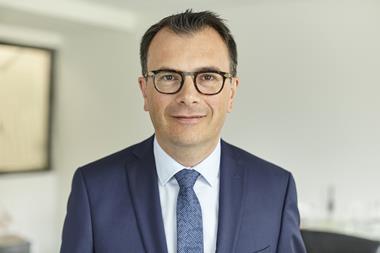Get yourself out there, build relationships and get a seat at the table
A few years ago I was asked by StrategicRISK to do a short video on what I would like to see change and improve in the risk management profession. Having reviewed the video in the last few days I wanted to see if it was still relevant and yes it is. Now more than ever.
Since I recorded the video, we have spent the past two years dealing with a pandemic, which has had a major impact on businesses, countries and societies around the world.
During these last couple of years, aside from the crisis meetings focused on survival, we have seen organisations focus on restructures, new strategies and business models changing. Among other things, digital technology adoption and transformation initiatives have accelerated.
These are all areas where risk managers and risk departments are thriving, providing valuable support and insights to enable strategic decision-making.
But it has not always been thus. Whilst the pandemic saw risk mangers finally brought to the top table for their insights and support, far too often we are cast aside. Coming back to the recommendations I made in the video - not an exhaustive list - it is clear a lot has changed, but also too much has stayed the same. So here they are again:
Get a seat at the table
As a first step, risk managers should be knocking on the door and asking for an invitation. It is surprising how often this works. If it doesn’t work then its important to catch their attention by demonstrating value. The risk manager needs to identify influencers and allies who they may be able to approach to get an invitation in the first place.
In order to demonstrate true value, the risk manager first needs to understand what is important to their senior executives and learn to speak their language. If the risk manager can understand what is close to their heart, such as a pet project or initiative, it’s a great starting point to offer help or support.
So what should this support look like? Clearly, senior executives are unlikely to be impressed if the risk manager only comes to them with roadblocks, negative risks and doom and gloom. It is far more productive to present opportunities and solutions to risks or, indeed, what the deviations (both positive and negative) to the objectives may be when reporting back. Using Quantitative Risk Analysis where possible in these cases, can also have a profound effect on the value add of risk management.
Gain buy-in
While gaining top management support is vital, equally as important is ensuring the wider staff team are on board. They are being asked to identify risk. To take time out of their jobs to support a risk management program that they may not understand, see the value of, or receive feedback from.
So focus on communication and - once again - the softer skills. Offer a proper thank you, along with feedback on how their risk insights are supporting decision making or being escalated and used at the highest levels. This can be achieved via newsletters, interesting and visual annual risk reports, road shows, videos or simply stepping away from the desk and meeting people on a one on one basis. Take this one on one time to sell risk management but also use another important risk managers skill, listening. These discussions alone already set the risk manager up with:
- Identified risks (without the need for the staff members to go through as much of a time-consuming formal process);
- An understanding of the time-consuming or frustrating aspects of the ERM program that could be improved upon;
- A better idea of how staff can be supported better to either avoid busy periods or receive additional support;
- An opportunity to explain why risk management is important and how it might help them and their departments, and
- A starting point for developing incentives and motivations for identifying risk and developing a positive risk culture.
Instil the right risk culture
Without the right risk culture in an organisation there is a good chance that even the best designed risk management program will fail.
Risk culture is the combination of values, attitudes and behaviours within an organisation in relation to risk management. This creates the foundations of an organisations approach to risk as it affects all risk decisions and ultimately the delivery of business objectives.
Building a positive risk culture takes a huge amount of time and effort in order to win hearts and minds. It requires the risk manager to be visible, approachable and an ally to the business. The following is a list of areas where the risk manager should be actively involved.
Develop your soft skills
Essentially, what risk managers need to focus on, in order to take the profession forward, is their soft skills, including: Communication, listening, relationship building, diplomacy, collaboration, adaptability, strategic mindset and a salesman-like ability to sell risk management.
Communication is key. Getting away from your desk and out into the business and asking the right questions so you can develop a risk framework that better suits everyone’s schedules and ways of working while actually adding value to what they are doing.
But, this is not as easy when the organisation and its staff are dispersed. As we have seen this past couple of years, COVID has altered the way we work. Overcoming this obstacle is where another key skill comes into play: creativity.
If there are concerns about social distancing and not being able to meet one-to-one, or in groups in the office, then think differently. There are a number of alternatives that might work, such as holding outdoor meetings, hosting highly interactive and visual virtual meetings and workshops and/or adding risk as a regular agenda item in weekly team meetings and ensure that you attend as many as you can..
As we continue to navigate through the crisis, let us lean on our soft skills to better leverage the technical skills we, or other team members may have, to improve risk management now and into the future.
Alexander Larsen is president of Baldwin Global Risk Services




















No comments yet